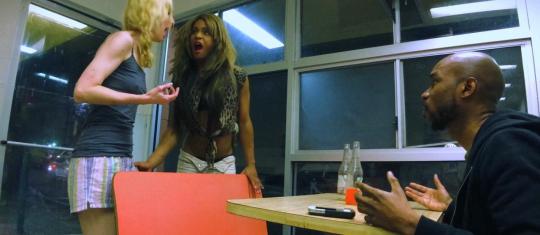#SeanBaker
Explore tagged Tumblr posts
Text

Sean Baker’s New Film 'Anora' Celebrates Sex Workers
In the funny and wild movie Anora, a sex worker marries the son of a Russian rich man. When Sean Baker won the Palme d’Or award at Cannes for Anora, he dedicated it to "all sex workers, past, present, and future." This was a perfect tribute from a director known for featuring transgender sex workers in his film Tangerine and casting Simon Rex as a former porn star in Red Rocket.
#Anora #SeanBaker #Cannes #SexWorkers #FilmFestival #Tangerine #RedRocket #SupportSexWorkers #LGBTQCinema #IndependentFilm #ComedyFilm #Cannes2023
#Anora#SeanBaker#Cannes#SexWorkers#FilmFestival#Tangerine#RedRocket#SupportSexWorkers#LGBTQCinema#IndependentFilm#ComedyFilm#Cannes2023
7 notes
·
View notes
Text

La reflexión del cineasta norteamericano Sean Baker (@bakermovies), tras quedarse con la Palma de Oro por su película Anora, en el cierre del @festivaldecannes.
Baker dedicó el premio a “todas las trabajadoras sexuales, pasadas, presentes y futuras”, subrayando la importancia de “hacer películas destinadas a la exhibición teatral”.
0 notes
Photo

Red Rocket is an agonisingly ecstatic ride. Like a slow evolving car crash, when everything does come apart, it does so really fast. https://is.gd/sHCOMy
0 notes
Text
HOLLYWOOD
Masterlist
Ch1

yn.nolan

liked by mark.eydel, ellefanning, jonathannolan, seanbaker, and 55k others
tomfoolery🎬💃🏻
@markeydel @anorafilm
View comments
mark.eydel my ani
by yn.nolan
ellefanning this movie altered my brain chemistry
yn.nolan I would say same but like I have yet to fully sit and watch it. ellefanning what do you mean, I sat next to You at the premiere yn.nolan I’m going to hold your hand while I say this… I hate seeing myself on screen. ellefanning you DISASSOCIATED DURING ONE OF THE BIGGEST NIGHTS OF YOUR CAREER yn.nolan maybe 🏃🏻♀️ user stop this is so funny
user this movie, @yn.nolan, the women that you are.
user her range of going from only horror to this, wow.
seanbaker so glad you could be our anora
yn.nolan honored that you met me be her user not to be a hater girl, but this relationship is quite odd user girl, you're reaching
Jonothannolan one of many proud dad moments. I love you, my tiny dancer 🩰.
yn.nolan dad 🥹, thank you for believing in me so much. user her dad calling her his tiny dancer
ellefanning Sooo girls night, when you get back from the big apple!!
Liked by yn.nolan
user hear me out... yn and drew starkey would be an unstoppable couple.
user shhhhhh, we can’t be to loud about this user I agree but silently ellefanning guys I too think they would be cute but they’ve never met This comment has been deleted user Elle being one of us is crazy
bellahadid my icon queen
yn.nolan oh how I love you, Bella
lucyhale gorgeous girl
yn.nolan mwah 💋
guswenner you’re iconic, I guess
yn.nolan @ellefanning what is he doing? ellefanning honey I don’t know
laracosima such an icon
yn.nolan girl, have you seen yourself? Oh my
jonathannolan added to their story


proud of the woman that you are, my little dancer. you and I against the world.
yn.nolan replied to your story
yn.nolan dad, god i miss you so much jonathannolan My sweet girl, you're doing what you were always meant to. yn.nolan you and i against the world

#drew starkey fanfiction#drew starkey x reader#abbie's corner#drew starkey fluff#drew starkey imagine#actress!reader#drew starkey x actress!reader#actress#hollywod series#queen of horror#hollywood it girl#hollywood#drew starkey x y/n#drew starkey fic#anora movie#anora film#mikey madison#maxxxine#elle fanning
62 notes
·
View notes
Text
Anora Is EXHILARATING! | Movie Review
Anora Is EXHILARATING! | Movie Review https://www.youtube.com/watch?v=k1QJXZ66vvc Welcome to my movie review of Anora, directed by the acclaimed Sean Baker and featuring a standout performance by Mikey Madison. Join me as we explore the film’s intricate plot, character development, and Baker's signature storytelling style that challenges conventional narratives. We’ll discuss how Mikey Madison brings depth to her role, capturing the essence of her character’s journey with authenticity and emotion. From the vibrant cinematography to the poignant themes of identity and belonging, "Anora" is a film that resonates on multiple levels. Whether you’re a fan of indie films or curious about Sean Baker’s unique approach to storytelling, my review will provide you with insights and a deeper appreciation for this cinematic gem. Don’t forget to like, subscribe, and share your thoughts on Anora in the comments below! #Anora #SeanBaker #MikeyMadison via Chatalbash Reviews https://www.youtube.com/channel/UCmqQebnXAVWe5OKEfVHfj2g November 04, 2024 at 08:29AM
#marvelmovies#superheronews#comicbookmovies#moviecritique#filmreview#undeadromance#cinematiccritique#classicfilms
0 notes
Text
Reimagining Representation: Tangerine, Trans Visibility, and Subversive Filmmaking
youtube
The film Tangerine, which debuted at the 2015 Sundance Festival, caused quite a stir amongst the audience and critics when it was revealed that the micro-budget drama-comedy was shot entirely on three iPhone 5s. The writer and director of the film, Sean Baker, spent eight months in the “unofficial red-light district” in Hollywood, getting to know the people and the area when he came across an aspiring black trans actor named Mya Taylor, who plays Alexandra, the more subdued one of the pair. It is then through Taylor that Baker met Kiki Rodriguez, a fellow trans actor, who Baker ended up casting as the volatile yet lovable Sin-Dee Reel. As it happens, Taylor and Rodriguez are very close friends with the trans women who work the area. Before signing on, however, Rodriguez made one stipulation: she said that Baker, in order to make this movie with her, had to promise to depict the harsh reality of what goes on in the streets. She went on to say that these trans women are out there because they have to be and that Baker should make the film hilarious and entertaining for both them and the women who are actually working the corner.
The film Tangerine, released at Sundance in 2015, depicts a day in the life of two trans women of color living in Hollywood. It is Christmas Eve, and Sin-Dee Reel is back on the block after a 28-day stint in jail. Upon hearing that her boyfriend/pimp hadn’t been faithful while she was away, the working girl and her best friend, Alexandra, a black trans woman, embark on a mission to get to the bottom of the scandalous rumor. Their journey leads them through the underbelly of various subcultures in L.A., such as trans street culture, and includes side stories such as an Armenian family dealing with their own repercussions of infidelity.
The initial release of the film elicited some cagey first impressions, such as the decision to not even mention the fact that the two protagonists of the film are trans women, and the decision to release a movie poster of a shadowy photo of the women that completely obfuscate their identities as trans women of color. That being said, I believe the film is refreshingly brash and brave in the way that it portrays its two fiery heroines as fiercely individualistic trans women trying to survive the gritty streets of L.A. by any means necessary. And at the time it was released, in 2015, featuring actual trans women as both the film’s principal characters, as well as integral writers, was an unfortunate anomaly.
There was a whirlwind of commentary surrounding the fact that Tangerine was shot entirely on iPhones. But the fact that a low-budget film about two transgender sex workers managed to reach mainstream cinemas, even back in 2015, is just as relevantly important. The film was released in the midst of an upsurge in transgender media programming that was occurring at that time, in which some expressed concern that is often rightly underpinned with disquiet about how trans lives are being represented and for what purpose. This includes debates about whether storylines are “voyeuristic, sensationalistic, overly focused on celebrity trans lives, or pathologizing (Malone, 2020).” Given that many transgender people remain marginalized, face mental health stresses, discrimination in access to healthcare, and secure housing and employment implore that populist representations create realistic and non-shaming portrayals of trans lives.
Despite some criticism surrounding the pitting of trans women of color into a trope of sex work, I consider the film Tangerine to be an accurate, nuanced, and strangely beautiful story of the real lived experiences of transgender folks. And it is a film, that when I watched it in 2015, elicited strong feelings in me and made me question my own sense of identity. I argue that the film Tangerine, with its inclusion of two trans women of color as both integral writers of the film, and as its two protagonists, coupled with the subversive filmmaking allowed by only using iPhones, represents a turning point in mainstream media representations of transness and intersectional marginalization. The social realism of the film, driven by the use of the iPhone to evoke elements of visual presentation, serves to challenge dominant narratives of cisnormativity. In this review, I plan to discuss how the film centers its trans characters, not as the stereotypical “villains, tricksters, or sinners, but as complex women who live difficult, though sometimes humorous, lives (Ridley, 2019, p. 482).” In addition, I plan to argue that the use of iPhones as the film’s only cameras is a subversive, yet aesthetic, technical choice that brings trans identities colorfully and vibrantly to the surface of the visual text. Furthermore, I discuss how filming Tangerine with the iPhone produces a real, yet celebratory, depiction of transness, and serves to disrupt the expected visual syntaxes of gender attribution (Koch-Rein, et al., 2020).
For this analysis, I will discuss different scenes from Tangerine to highlight how the film’s technical and visual choices depart from the norm and disrupts the transparency of most films, blurs the lines between perception and what is real, and emphasizes the non-natural, constructed nature of both film and gender identity. Additionally, the non-adherence to visual norms subverts ingrained perceptions of gender, as the use of the iPhone complements the content of the film to challenge cisnormativity while also presenting transness with dignity.
The first scene in Tangerine I would like to discuss takes place early on in the film. Just prior to this scene, Sin-Dee encounters a drug dealer named Nash (Ian Edwards), whom she asks where she might find her boyfriend Chester (James Ransone) and the mysterious new woman he has taken up with. During this scene, Nash intentionally misgenders both Sin-Dee and Alexandra. When Alexandra leaves, Nash suggests Sin-Dee should “just go with your homeboy and get the fuck out of here” (14:05), then later says to Sin-Dee “Alright, come on man,” as she picks up his pack of cigarettes and takes one (14:56). This scene and its misgendering foreshadow the scene that is to come. Following this encounter, the iPhone shows Sin-Dee sitting at a bus stop bench in the low, midday December sun. At this juncture, the audience knows that Sin-Dee’s goal of finding her boyfriend Chester has been hampered as she spent the last of her money on bus fare and a donut to split with Alexandra. Rather than present the story as a reduction down to Sin-Dee’s transness by focusing on her body or her transition, it rather presents a conflict almost anyone can identify with—tracking someone down—while still paying homage to her transness by depicting issues and struggles specific to trans people: the daily experience of being misgendered coupled with the poverty many trans people of color face (Fischer, 2018). (Scene follows next paragraph)
In the scene mentioned above, Baker uses the iPhone, and close-ups of Sin-Dee’s facial expressions invite the audience to consider her thoughts rather than focusing on her body, as she is only shown from the neck up in this sequence. Instead, we witness the anxiety strewn across her face as she considers her next moves. The iPhone moves behind Sin-Dee so we can only see the top of her head above the bus bench as a bus enters the shot from the left (16:01). A large print ad is plastered to the side of the bus, half of which is obscured by the bench. Everything in the scene is in clear focus, from Sin-Dee’s head to the print ad, to each passenger disembarking from the bus. While we cannot see Sin-Dee’s face, we are able to see the face from the eyes up on the bus ad staring directly into the camera. Audiences would most likely conclude that the face is that of a man, however, in the ad is a slender hand with shiny purple painted nails wrapping around the forehead of the face. This sequence serves to challenge the “passing” model of gender attribution (Koch-Rein, et al., 2020). (The entire sequence is below)
youtube
Due to the extensive depth of field that comes with an iPhone camera, viewers must absorb all elements of the scene equally. As the shot demonstrates and depicts: Sin-Dee, whose gender identity is under inquiry; the passengers getting off the bus, who will make a judgment about Sin-Dee’s gender; and the bus ad, an image that shows viewers they cannot depend on their visual perceptions to make judgments about gender (Koch-Rein, et al., 2020).
The other scene in Tangerine I wish to discuss employs the intersection between the film’s distinctive visual presentation elements and its content to subvert cisnormativity. This scene occurs towards the end of the film, after Alexandra, an aspiring singer, finishes a set at a dingy, sparsely-populated club. The iPhone captures a “tight shot” of Sin-Dee and Dinah, the cis woman with whom Sin-Dee’s boyfriend Chester had been sleeping, as they are in a small bathroom sharing a bowl of meth. Rather than the harsh, white fluorescence that is to be expected, the bathroom is instead lit up in a beautiful visual array of magenta, with perpetually cascading points of pale blue light, akin to what one would see from the light refraction of a disco ball. As Sin-Dee and Dinah stand facing each other, while Sin-Dee smokes drugs, ambient music overtakes the scene. After the iPhone swivels back and forth a few times, alternately focusing on Sin-Dee and Dinah as if sizing them up, the camera finally allows both women to appear equally in the scene (54:00). Pink hues in the scene intensify, and the diamond-pointed bits of pale blue light continue to circulate while moving across the bodies of these women throughout the scene. Up until this point in the film, Sin-Dee had been abusing Dinah as she dragged her around town. But now, Sin-Dee mouths to Dinah to “come here,” pulling Dinah closer to her as Sin-Dee proceeds to apply under Dinah’s eyes and forehead with gentle strokes. Sin-Dee appears calm and gives an apprehensive Dinah a conciliatory smile, as she eventually calms down and accepts the gesture. At this juncture, Sin-Dee is teaching Dinah how to apply lipstick, first using herself as a model before prompting Dinah to follow suit. The scene ends with both of the women looking into the bathroom mirror after a brief makeup lesson, as Sin-Dee nods to confirm the completion of a successful conciliatory gesture.
Like other scenes, this scene also serves to destabilize popular notions of gender attribution (Koch-Rein, et al., 2020). This scene, in which a trans woman and a cis woman occupy the same bathroom—a cornerstone of socio-political discourses around who has “rights” to certain space—seems to move back and forth between their expected roles. This subverts cisnormative expectations by first posing the women as enemies, as this moment of reconciliation is an unexpected turn in the story supported by the visual elements (Malone, 2020). As some viewers may assume that Dinah, a cisgender woman, is capable of achieving gender norms such as applying makeup, it may come as unanticipated that Sin-Dee, a trans woman, is teaching Dinah how to evoke femininity through presentation.
While there was some discussion about problematic representation surrounding the release of Tangerine in 2015, I believe that most of that criticism is far outweighed by the benefits of including trans actors as cultural interpreters in their own films. However, as Mia Fischer writes, “Sourcing practices also reveal that journalists continue to rely on non-transgender “experts” as proxies, rather than letting trans people tell their own stories, which often individualizes struggles and failures but does not address the systemic nature of intersecting oppressions (Fischer, 2018, p. 97).” While the subversive use of the iPhone to film Tangerine, coupled with the inclusion of two trans actors as protagonists, is a positive development, I do believe the social-realist style of the film and its portrayal of the struggles facing trans women of color do so at the expense of addressing larger socio-political issues. While the inclusion of Mya Taylor as Alexandra, and Kiki Rodriguez as Sin-Dee, the trans actors are able to wrest control of the narrative and challenge cisnormativity, there is no mention whatsoever of the white capitalist patriarchy American system that keeps these people relegated to perpetual marginalization. Moving forward, I will like to see films that encompass both representational elements.
As I mentioned earlier in this review, I saw Tangerine soon after it was released in 2015. I myself identify as a transgender female and am currently in the initial stages of my transition. Though I have long known I was “different” in some way, and have long known of the incongruity between my biological sex and my gender, I didn’t quite have the language to describe those very difficult feelings when I was younger. The time and the way in which I grew up played a substantial role in the formation of my ideas about sex and gender. I grew up with a healthy appetite for movies and television, and the lack of censorship of what I watched on behalf of my parents meant I was exposed, at a very young age, to a wide array of what is considered “adult” media. I do recall watching movies and TV shows in the 1990s that portrayed transgender people as perverts, sexual deviants, sex workers, drug addicts, and depraved villains. At that age, I already knew something was “up” with me, but both the media representations of trans people and the comparatively harsh and discriminatory rhetoric at the time made me feel incredibly insecure and like I had to protect my secret at all costs. As a coping mechanism, I developed a shield of sorts; overt displays of masculinity, aggression, drug addiction, covering my body in tattoos.
However, as I got into my early 20s, I was living in Los Angles, over a thousand miles away from my family and the small Colorado town I grew up in. For the first time in my life, I was completely anonymous and free to explore my identity without fear of being found out. L.A., and particularly West Hollywood, has a large LGBTQ population. I began to make some friends and the community and started presenting as female almost full-time for a period of 18 months or so. It was a time of great liberation, confusion, hope, and internalized self-hatred. Though I presented as female, I nonetheless felt dysphoric on a daily basis. I was in the midst of a bad heroin and meth addiction and was exposed to some very seedy, depraved aspects of the criminal underbelly that so many trans people encounter. And that is a big part of why I fled California in 2012 to move back to Colorado, where I settled in Denver. That move signified a sort of regression into the safety of my old behaviors until about 2015, when I happened to see Tangerine. By this time, I had gotten off of drugs and was slowly becoming more accepting of who I am. But when I saw the film for the first time, it brought up some very troubling memories of my time living in and around the area depicted in the film.
That realization helped me to process some of my past, and I eventually arrived where I am at today. I believe that is for a couple of reasons. First, the simple fact of getting older and maturing helped me in not caring what others thought of me so much. Also, I believe the continued visibility of trans identities in both our media and culture, while it has created some backlash, is a positive development overall in helping challenge hetero- and cis-normativity, and has helped me personally in that I can now see myself in trans characters in films and on TV. I believe we need to continue to make progress by increasingly including trans actors, writers, directors, etc. as integral to the process of reclaiming control of the narrative.
References
Cavalcante, A. (2017). Breaking into transgender life: Transgender audiences' experiences with “First of its kind” visibility in popular media. Communication, Culture & Critique, 10(3), 538-555. https://doi.org/10.1111/cccr.12165.
Fischer M. (2018) Queer and Feminist Approaches to Transgender Media Studies. In: Harp D., Loke J., Bachmann I. (eds) Feminist Approaches to Media Theory and Research. Comparative Feminist Studies. Palgrave Macmillan, Cham. https://doi.org/10.1007/978-3-319-90838-0_7.
Koch-Rein, A., Haschemi Yekani, E., & Verlinden, J. J. (2020). Representing trans: Visibility and its discontents. European Journal of English Studies, 24(1), 1-12. https://doi.org/10.1080/13825577.2020.1730040.
Ridley, L. (2019). Imagining otherly: Performing possible black trans futures in tangerine. Transgender Studies Quarterly, 6(4), 481-490. https://doi.org/10.1215/23289252-7771653.
#QueerMedia#Tangerine#MyaTaylor#KikiRodriguez#SeanBaker#Trans#TransRepresentation#intersectionality#cisnormativity#narrative#marginalization#Hollywood
10 notes
·
View notes
Photo

Kheite FW21
Dir: Sean Baker Dop: Sean Price Williams
https://vimeo.com/515000475
23 notes
·
View notes
Text
Memories : The Best Films of the 2010s
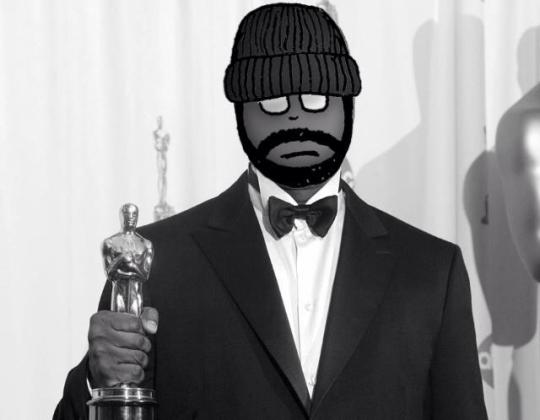
Only a few years into my tenure as a film blogger, and I’ve been tasked with a monumental undertaking : ranking the top films of the last decade. Reflecting year by year is a journey in its own right, and with things like recency bias to take into account, plus the dice roll of blessing and curse that perspective and time bring to older films, I knew that this would be memorable at best, and stressful at worst.
That being said, I don’t claim to have seen every movie, so I know that there are some ‘glaring’ omissions. I am always open to recommendations for films I should watch (for the purpose of blogging on them or otherwise), but DOOMonFILM has always been about my personal experience as a film fan, first and foremost. Discussion is welcome, and constructive criticism will always be considered, but this is one man’s opinion.
_________________________________________
THOUGHTS ON THE DECADE
The 2010s, despite moments of controversy in terms of diversity, turned out to be surprisingly forward-thinking in hindsight. On more than one occasion in the decade, the film of the year (in terms of awards or in terms of critical/public reception), as well as highlight films of each year, were made by foreign directors. Women and minorities also managed to be recognized in front of and behind the camera at what seemed like a higher rate. Newer technologies were embraced, such as pushes forward in new cameras or directors opting to shoot on devices as small as iPhones, leaps forward in special effects, and a multitude of movies given the iMax treatment. A handful of directors happened to put out multiple movies throughout the decade, and a few of those in that handful managed to make multiple award-winning and widely accepted films. Marvel left such an impact on Hollywood, and the worldwide movie industry, that DC was forced to try and follow suit, and mergers with Sony and Disney were top tier news for months on end. Actors like Scarlett Johanson, Ryan Gosling, Emma Stone and Leonardo DiCaprio, among others, solidified themselves as box-office legends, while actors on both sides of their career (first-timers and those in the twilight of their career) found success throughout the decade. All in all, it was a decade that continued to make me happy to be a movie fan, and as hard as it was to do, I managed to find 100 films throughout the decade to rank.
_________________________________________
100. It Comes at Night (dir. Trey Edward Shults, 2017) 99. Kick-Ass (dir. Matthew Vaughn, 2010) 98. The Peanuts Movie (dir. Steve Martino, Andy Beall and Frank Molieri, 2015) 97. Everybody Wants Some!! (dir. Richard Linklater, 2016) 96. Upstream Color (dir. Shane Carruth, 2013) 95. Avengers : Age of Ultron (dir. Joss Whedon, 2015) 94. John Dies at the End (dir. Don Coscarelli, 2013) 93. Doctor Strange (dir. Scott Derrickson, 2016) 92. Keanu (dir. Peter Atencio, 2016) 91. Free Fire (dir. Ben Wheatley, 2017) 90. Upgrade (dir. Leigh Whannell, 2018) 89. Chappie (dir. Neill Blomkamp, 2015) 88. American Ultra (dir. Nima Nourizadeh, 2015) 87. I, Tonya (dir. Craig Gillespie, 2017) 86. Boyhood (dir. Richard Linklater, 2014) 85. The Grand Budapest Hotel (dir. Wes Anderson, 2014) 84. La La Land (dir. Damien Chazelle, 2016) 83. Ex Machina (dir. Alex Garland, 2015) 82. Nightcrawler (dir. Dan Gilroy, 2014) 81. Sicario (dir. Denis Villeneuve, 2015) 80. Looper (dir. Rian Johnson, 2012) 79. The Killer Inside Me (dir. Michal Winterbottom, 2010) 78. Hell or High Water (dir. David Mackenzie, 2016) 77. End of Watch (dir. David Ayer, 2012) 76. Django Unchained (dir. Quentin Tarantino, 2012) 75. Thoroughbreds (dir. Cory Finley, 2018) 74. Chronicle (dir. Josh Trank, 2012) 73. Melancholia (dir. Lars von Trier, 2011) 72. Black Mirror : Bandersnatch (dir. David Slade, 2018) 71. Detroit (dir. Kathryn Bigelow, 2017) 70. BlacKkKlansman (dir. Spike Lee, 2018) 69. Black Panther (dir. Ryan Coogler, 2018) 68. I Am Not Your Negro (dir. Raoul Peck, 2017) 67. Straight Outta Compton (dir. F. Gary Gray, 2015) 66. Kubo and the Two Strings (dir. Travis Knight, 2016) 65. It Follows (dir. David Robert Mitchell, 2014) 64. Logan Lucky (dir. Steven Soderbergh, 2017) 63. Get Out (dir. Jordan Peele, 2017) 62. Booksmart (dir. Olivia Wilde, 2019) 61. Beats, Rhymes & Life : The Travels of A Tribe Called Quest (dir. Michael Rapaport, 2011) 60. Lady Bird (dir. Greta Gerwig, 2017) 59. Moonrise Kingdom (dir. Wes Anderson, 2012) 58. The Cabin in the Woods (dir. Drew Goddard, 2012) 57. Black Swan (dir. Darren Aronofsky, 2010) 56. Captain America : The Winter Soldier (dir. Joe Russo, 2014) 55. If Beale Street Could Talk (dir. Barry Jenkins, 2018) 54. Avengers : Infinity War (dir. Anthony Russo, 2018) 53. True Grit (dir. Ethan and Joel Cohen, 2010) 52. Three Billboards Outside Ebbing, Missouri (dir. Martin McDonagh, 2017) 51. Whiplash (dir. Damien Chazelle, 2014) 50. Midsommar (dir. Ari Aster, 2019) 49. Journey to the West : Conquering the Demons (dir. Stephen Chow and Derek Kwok, 2013) 48. Sorry To Bother You (dir. Boots Riley, 2018) 47. Mid90s (dir. Jonah Hill, 2018) 46. Logan (dir. James Mangold, 2017) 45. The Killing of a Sacred Deer (dir. Yorgos Lanthimos, 2017) 44. Phantom Thread (dir. Paul Thomas Anderson, 2017) 43. The Hateful Eight (dir. Quentin Tarantino, 2015) 42. Exit Through the Gift Shop (dir. Banksy, 2010) 41. The Irishman (dir. Martin Scorsese, 2019) 40. Suspiria (dir. Luca Guadagnino, 2018) 39. The VVitch (dir. Robert Eggers, 2016) 38. Dogtooth (dir. Yorgos Lanthimos, 2010) 37. The Lighthouse (dir. Robert Eggers, 2019) 36. Annihilation (dir. Alex Garland, 2018) 35. Drive (dir. Nicolas Winding Refn, 2011) 34. Beyond the Black Rainbow (dir. Panos Cosmatos, 2012) 33. The Favourite (dir. Yorgos Lanthimos, 2018) 32. Searching (dir. Aneesh Chaganty, 2018) 31. Tangerine (dir. Sean Baker, 2015) 30. Snowpiercer (dir. Bong Joon-ho, 2014) 29. Under the Skin (dir. Jonathan Glazer, 2013) 28. Dunkirk (dir. Christopher Nolan, 2017) 27. Blade Runner 2049 (dir. Denis Villeneuve, 2017) 26. Baby Driver (dir. Edgar Wright, 2017) 25. Joker (dir. Todd Phillips, 2019) 24. The Neon Demon (dir. Nicolas Winding Refn, 2016) 23. Spider-Man : Into the Spider-Verse (dir. Peter Ramsey, Bob Persichetti and Rodney Rothman, 2018) 22. The Shape of Water (dir. Guillermo del Toro, 2017) 21. The Social Network (dir. David Fincher, 2010) 20. Frances Ha (dir. Noah Baumbach, 2013) 19. Under the Silver Lake (dir. David Robert Mitchell, 2019) 18. Mad Max : Fury Road (dir. George Miller, 2015) 17. Good Time (dir. Josh and Benny Safdie, 2017) 16. Mandy (dir. Panos Cosmatos, 2018) 15. Once Upon a Time in Hollywood (dir. Quentin Tarantino, 2019) 14. Her (dir. Spike Jonze, 2013) 13. The Lobster (dir. Yorgos Lanthimos, 2015) 12. Inherent Vice (dir. Paul Thomas Anderson, 2014) 11. The Master (dir. Paul Thomas Anderson, 2012)
_________________________________________
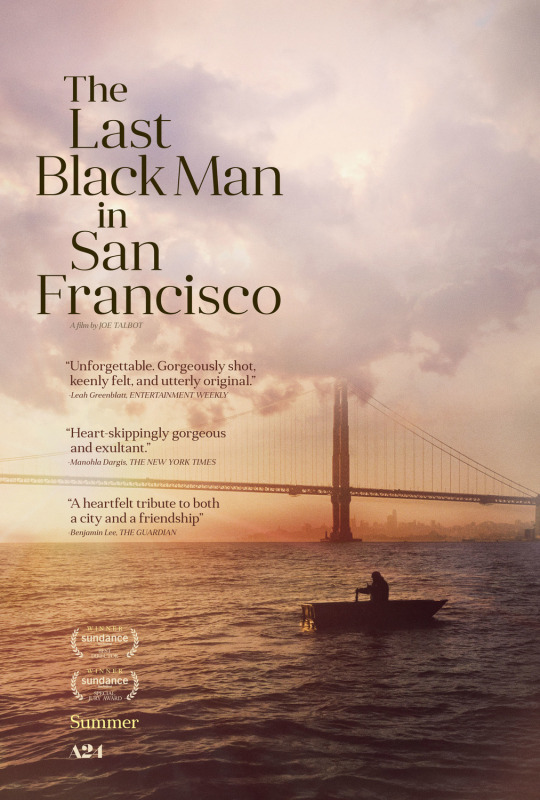
10. The Last Black Man in San Francisco (dir. Joe Talbot, 2019)
I saw this film as the decade was winding to a close, but it made easily one of the starkest impressions on me of any film-going experience I can recall. The movie looks amazing, the score and soundtrack are powerful, the acting is rich and dynamic, San Francisco is as beautiful on film as it is in real life, and the thoughts that arise from the narrative presented are the kind that hang around and result in personal changes that matter. A shining achievement from a stellar year of film.
_________________________________________
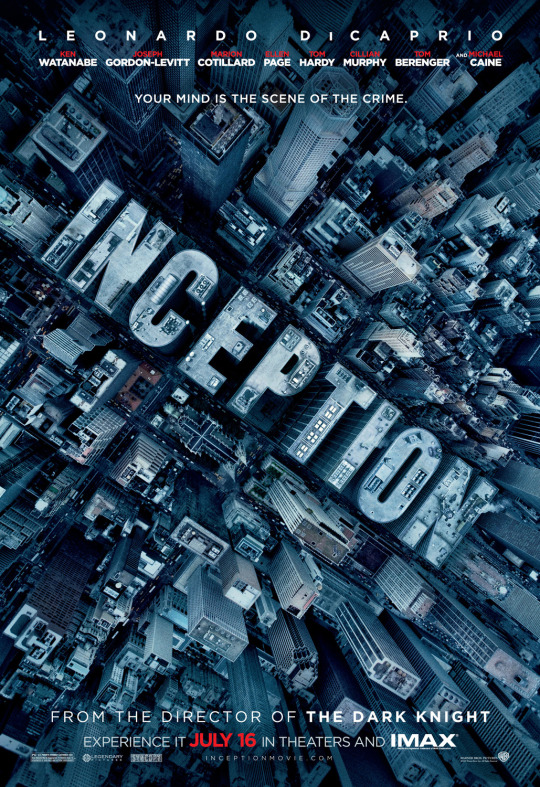
9. Inception (dir. Christopher Nolan, 2010)
If Christopher Nolan wasn’t already considered top tier prior to Inception, any doubters were left floored at the close of this masterpiece. For a story that could have easily been way too convoluted for standard audiences, the visuals, direction and pacing guide us through the madness perfectly. For anyone interested in dream depictions on cinema, for fans of stellar action, and for the smart people who know the quality that comes with the Nolan name, this one was a no-brainer.
_________________________________________
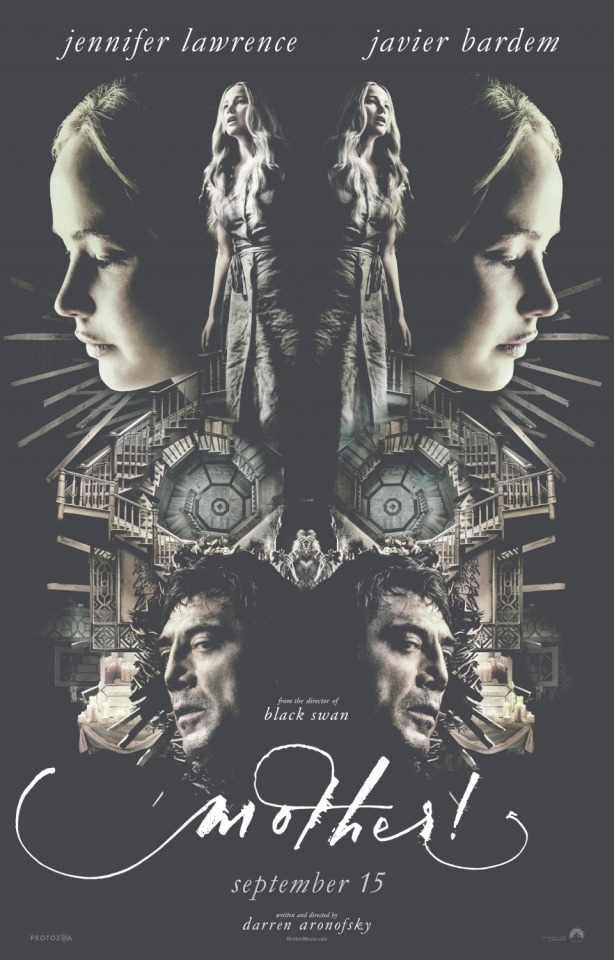
8. mother! (dir. Darren Aronofsky, 2017)
After being a bit on the nose with Noah, in terms of a film on religion, most directors would take that as a sign to move on from the topic. For a director like Darren Aronofsky, however, the next step was to seemingly go back to your mind-scrambling roots, dig deeper symbolically, narratively and metaphorically, and come back to the table with one of the most divisive and controversial films of the decade. mother! will clearly be a film ripe for analysis for years to come, and for as subjective and deep an experience as the film is, this reflection is welcome, as it serves to enrich future viewing experiences.
_________________________________________

7. Uncut Gems (dir. Josh and Benny Safdie, 2019)
How long does a film have to be out to be considered one of the best of the decade? In the case of Uncut Gems, I will allow recency bias, as it is clearly evident at the beginning of the closing credits that the film is special and will resonate for years to come. The Safdie brothers already had a classic under their belt with Good Time, and throwing that Sandler magic into the mix only amplifies their heightened and immersive style.
_________________________________________
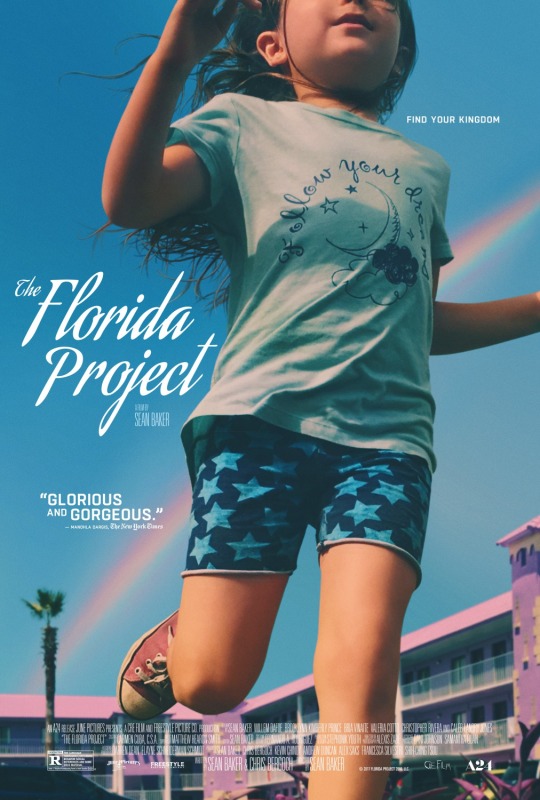
6. The Florida Project (dir. Sean Baker, 2017)
There are a small fraternity of directors that put out their first films and follow-up films in the 2010s, and while examples of possible award snubs can be found for these directors, there was one clear-cut case of oversight : the 2017 lack of recognition for Sean Baker’s immaculate, beautiful and moving The Florida Project. While Tangerine was certainly the loudest of warning shots a first time director could provide, the amount of growth, nuance and confidence found in this follow-up deserved multiple awards, not just an acting nod for Willem Dafoe. Perhaps Baker’s next film will bring him the recognition he deserves in terms of awards, but he’s already made a clear cut name for himself.
_________________________________________
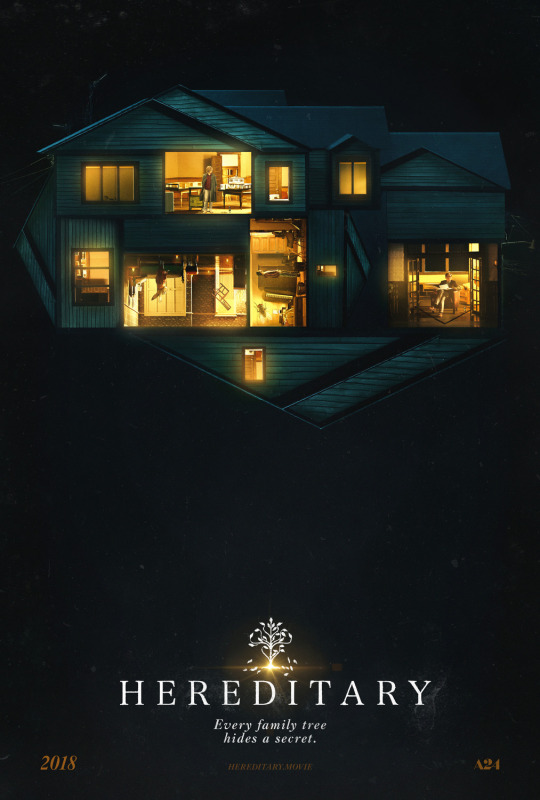
5. Hereditary (dir. Ari Aster, 2018)
I rediscovered a love for horror films in the 2010s, and a key reason would be the emergence of director Ari Aster. Upon seeing trailers for Hereditary, I knew that it would probably scare the life out of me, but the taste of the story given was so gripping I had to see it. The fact that the trailer was so powerful, only for the movie to unfold in ways that I never would have imagined or discerned from the trailer, was one of the most rewarding film experiences of the decade. Toni Collette also gave a performance for the ages.
_________________________________________
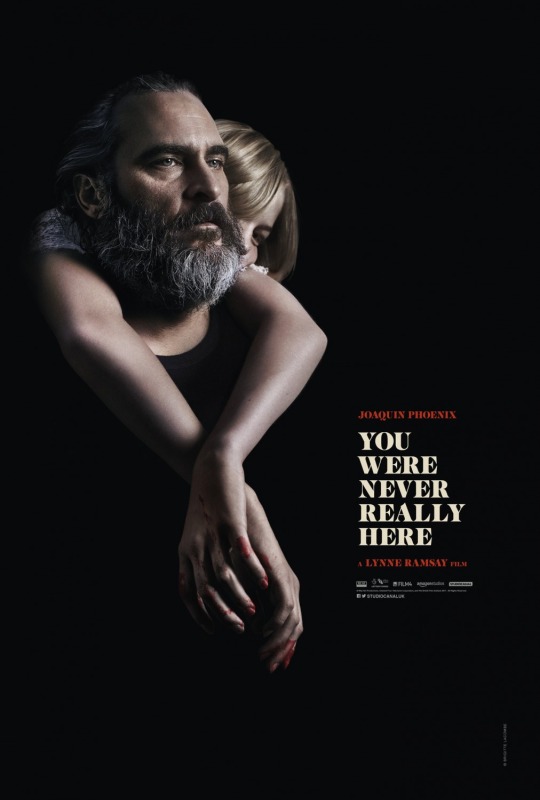
4. You Were Never Really Here (dir. Lynne Ramsay, 2018)
It’s arguable that Joaquin Phoenix may have had the strongest decade of any actor, and for my money’s worth, he was at his best in You Were Never Really Here. Much of the angst presented was previously explored in The Master, and as great as Joker is, it’s essentially the DCEU version of You Were Never Really Here, tonally and in terms of specific elements. Nobody short of the Safdie brothers are making movies that look, sound and feel like this one, and the unfortunate practice of human trafficking hitting the news forefront makes this film as timely as it is sad.
_________________________________________

3. Scott Pilgrim vs. the World (dir. Edgar Wright, 2010)
Hands down the coolest film of the decade. Not since Who Framed Roger Rabbit? had so many elements that I loved from other properties managed to find their way into the same movie, and the way that the gumbo was prepared and served was pitch perfect. As my friend Erin stated after we viewed the film, ‘If you watch this movie and don’t like it, I don’t think we can be friends’. Some of my favorite sequences of any film are in Scott Pilgrim vs. the World, and this is the EXACT kind of film I look forward to one day sharing with my children.
_________________________________________

2. Parasite (dir. Bong Joon-ho, 2019)
Another recent film that made an instant impact. In terms of topics like honesty, entitlement, and family dynamics, nothing I can think of in recent memory is touching Parasite. The parallels between the two families presented are perfect both visually and in the performances, and with each new bit of information presented, much of what you were previously presented is immediately recontextualized and put into question. This film, from front to back, is one of the most gripping journeys a filmgoer can take.
_________________________________________
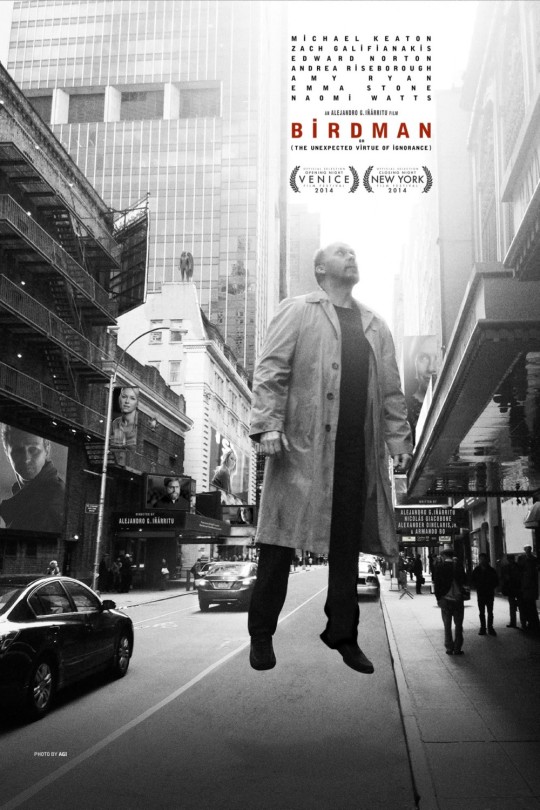
1. Birdman or (The Unexpected Virtue of Ignorance) (dir. Alejandro González Iñárritu, 2014)
Easily my favorite film of the decade. This is the closest thing to a song-poem that I’ve ever seen presented on film, and it’s heartbreakingly beautiful. Nothing else released in the decade looked or sounded like this film, and the way it meta-reflects on Hollywood, Broadway, superhero films and the importance of actors is equal parts hilarious, thought-provoking and wonderfully frustrating. The film answers enough questions it posits so as to not completely confound the viewer, but it leaves enough open-ended so that repeat viewings are rewarding. A true achievement of film, regardless of decade.
#ChiefDoomsday#DOOMonFILM#BestOf2010s#TheLastBlackManInSanFrancisco#JoeTalbot#Inception#ChristopherNolan#mother!#DarrenAronofsky#UncutGems#JoshSafdie#BennySafdie#TheFloridaProject#SeanBaker#Hereditary#AriAster#YouWereNeverReallyHere#LynneRamsay#ScottPilgrimVsTheWorld#EdgarWright#Parasite#BongJoonHo#BirdmanOrTheUnexpectedVirtueOfIgnorance#AlejandroGonzalezInarritu
17 notes
·
View notes
Photo
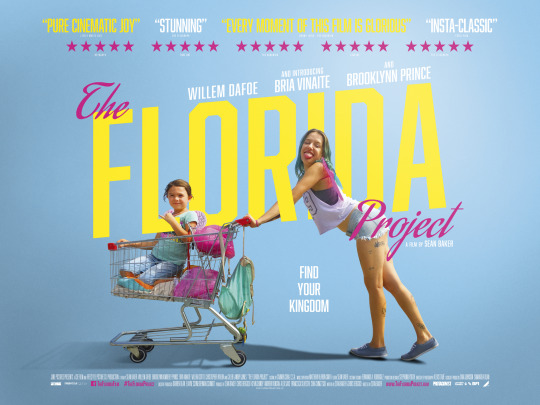
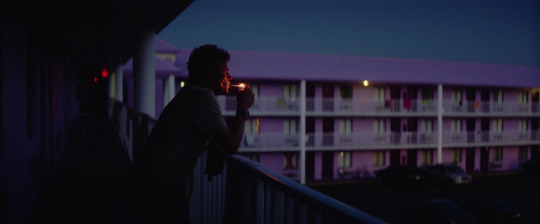


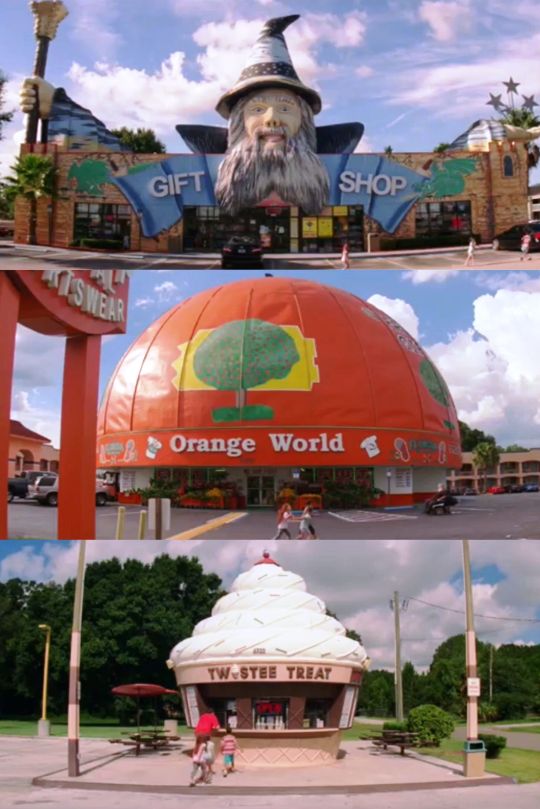

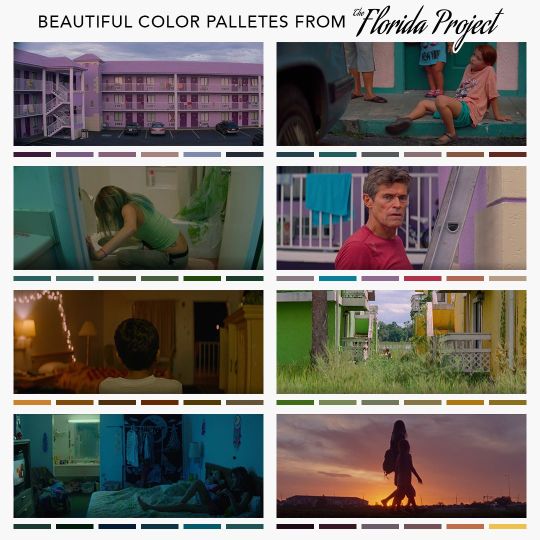
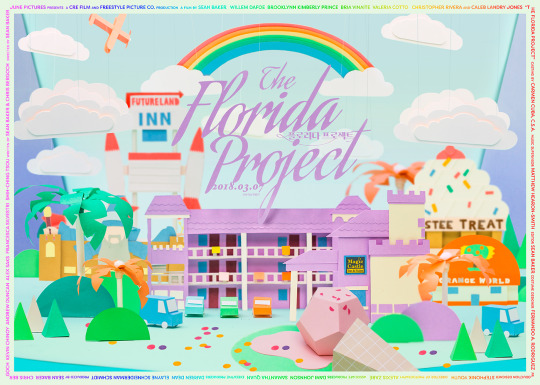


CSS: VOL 008 / The Florida Project
Dir. Sean Baker, 2017
1 note
·
View note
Text

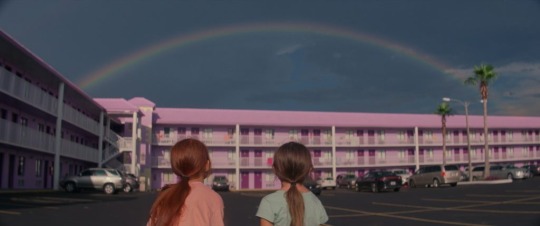


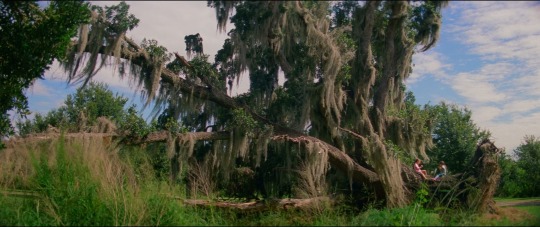
The Florida Project (2017) - Sean Baker
#movies#thefloridaproject#cinema#cinematography#seanbaker#pastel#film#films#2017#2017film#florida#disney#magicalland#aesthetic#purple#motel
1 note
·
View note
Text
To understand a woman who has become a mother, FLORIDA PROJECT
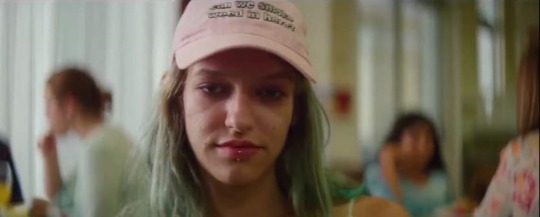

Florida Project (2017)
Sean Baker
To understand a woman who has become a mother
The perspective where it looks like gazing her daughter with the eye of Halley really hits home. The part where moonee said like jolly things that she wishes forks to be a candy.
I used to talk these ridiculous words to my mother when I was that age. Actually, I still tend to talk to my mom such as “food tastes like a pencil” or comparing animals to feelings, even I grow up now. My mom just seems to have seen me like halley’s eyes when I did that. She hasn’t pushed me to stop saying ridiculous words. She just smiled strangely like halley.
Mom’s saying, “I just live, because of you” often makes me happy, but somehow I couldn’t just smile because it feels like my existence killed her own personal life.
However, when I saw the scene that moonee chattered about a flood of thoughts at the table with her sparkling eyes, I understand why my mom said like that. She could truly live her life, for me.
She truly lives her life, just for me.
3 notes
·
View notes
Text


2019.5.12 "Florida Project" (2017) by Sean Baker
1 note
·
View note
Photo

#movie screening #1 today... #RedRocket @redrocketmovie . #SimonRex @simonrex415 #BreeElrod @breeality #SuzannaSon @thestrawberrybutcher #SeanBaker @bakermovies #film #cinema #movies #films #indie #independent #A24 @a24 (at Wilshire Screening Room) https://www.instagram.com/p/CWHN0njJVWd/?utm_medium=tumblr
#movie#1#redrocket#simonrex#breeelrod#suzannason#seanbaker#film#cinema#movies#films#indie#independent#a24
0 notes
Photo
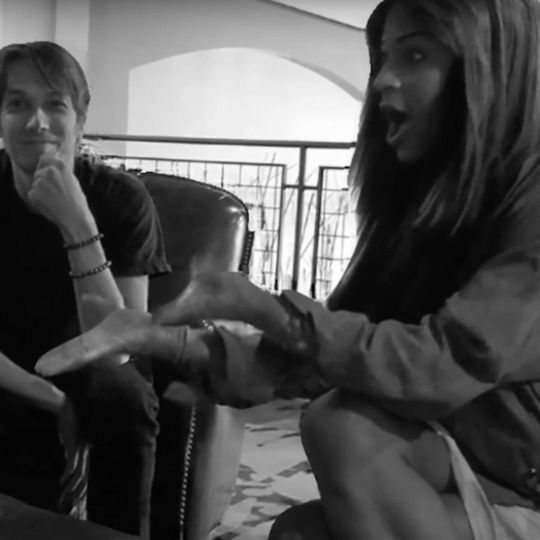
Body Language Although certain gestures can be very explicit, in most cases body language conveys a more subtle message about a person’s emotional state. The frame here—showing contrasting feelings—is from” How an iPhone Film Shocked the Movie World.” This is an intriguing and informative behind-the-scenes documentary about the making of the first hit mobile-shot feature “Tangerine.” And yes, that’s Sean Baker (@bakermovies) on the left. You can the video—directed by Sy Horrocks (@momofilmfest—at MobileMovieMaking (link in profile). #bodylanguage #mobilemoviemaking #Tangerine #filmicapps #iPhonefilmmaking #shotoniPhone #SeanBaker #frame-within-a-frame https://www.instagram.com/p/CUA2E4NvLOK/?utm_medium=tumblr
0 notes
Photo

#Cannes2021: con #RedRocket il talentuoso #SeanBaker esplora la spinta che si cela dietro il riscatto soffermandosi più sulla prospettiva che sugli esiti scrutando ancora una volta nella marginalità delle comunità dimenticate d'America. -"E' un piacere affidarsi alle abili mani di Baker mentre si aggira nella sua storia libera con le sue osservazioni affettuose e astutamente umoristiche del personaggio e il senso del luogo coinvolgente. Nei fotogrammi widescreen sempre interessanti del direttore della fotografia , quest'ultimo aspetto è altrettanto vivido e distintivo come lo erano le sue istantanee di Los Angeles in Tangerine e del Sunshine State in The Florida Project. Scattando in 16 mm con speciali lenti anamorfiche, cattura i colori saturi di calore dei cieli al tramonto estivi, la degrado ambientale della raffineria di petrolio e le distese assolate dei sobborghi scialbi" (David Rooney, #TheHollywoodReporter) -"Come il precedente lavoro di Baker, Red Rocket sembra fatto a mano, realizzato da zero, lanciato in modo intraprendente e non manomesso da dirigenti o tipi di marketing. Sembra creativamente puro come un romanzo di un ragazzo appena uscito dal college. Possa rimanere così per Baker finché lo desideri" (Todd McCarthy, #Deadline) -"Con Red Rocket, Sean Baker ci ha regalato una pastorale americana nonché un altro studio di vite dure ai margini, vicino nello spirito alla sua svolta con Tangerine" (Peter Bradshaw, #TheGuardian) #criticsreviews https://www.instagram.com/p/CRV9b47F8nR/?utm_medium=tumblr
0 notes
